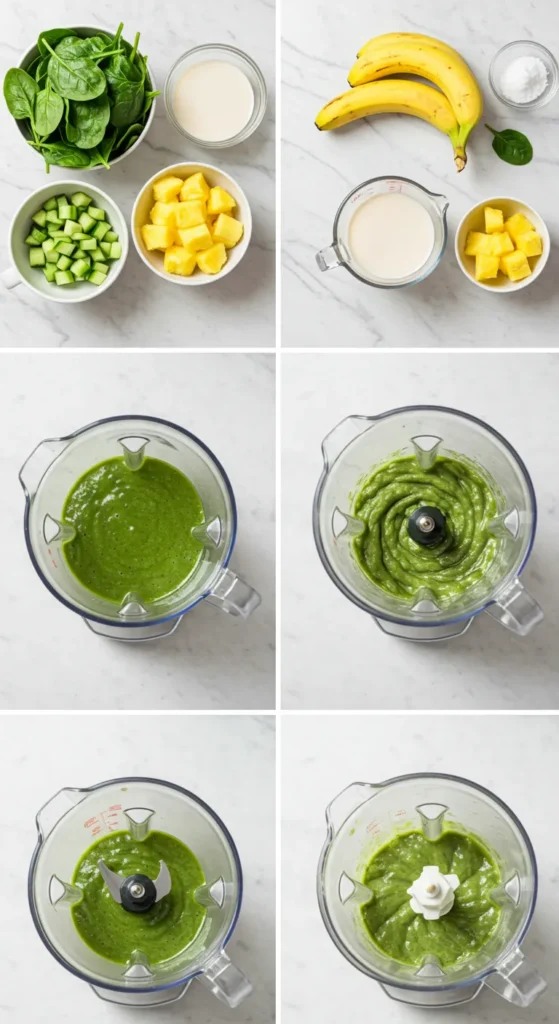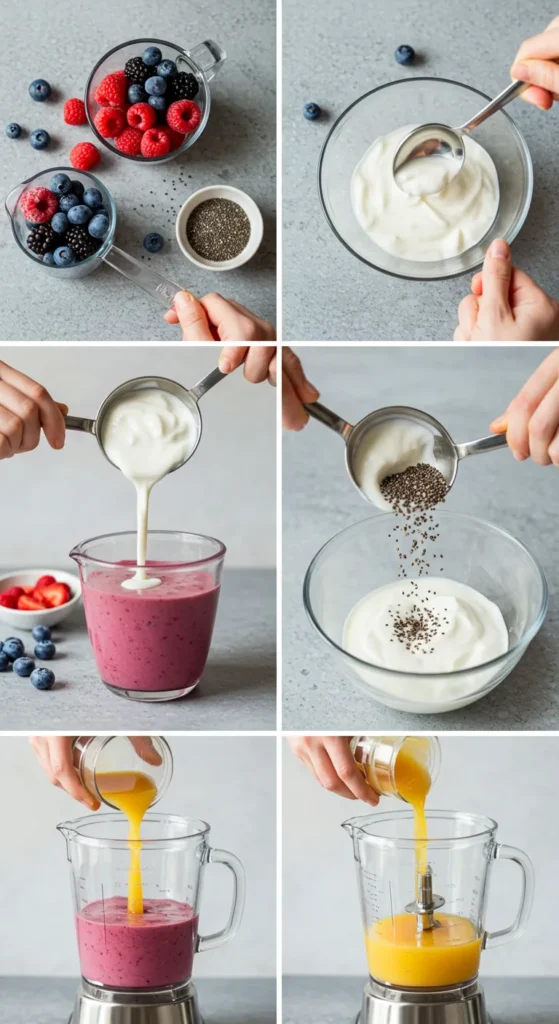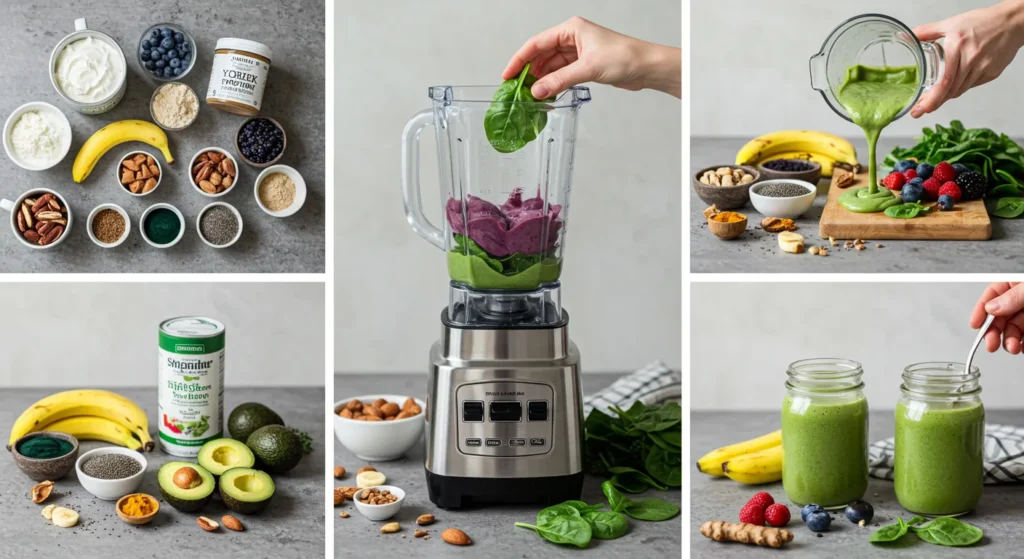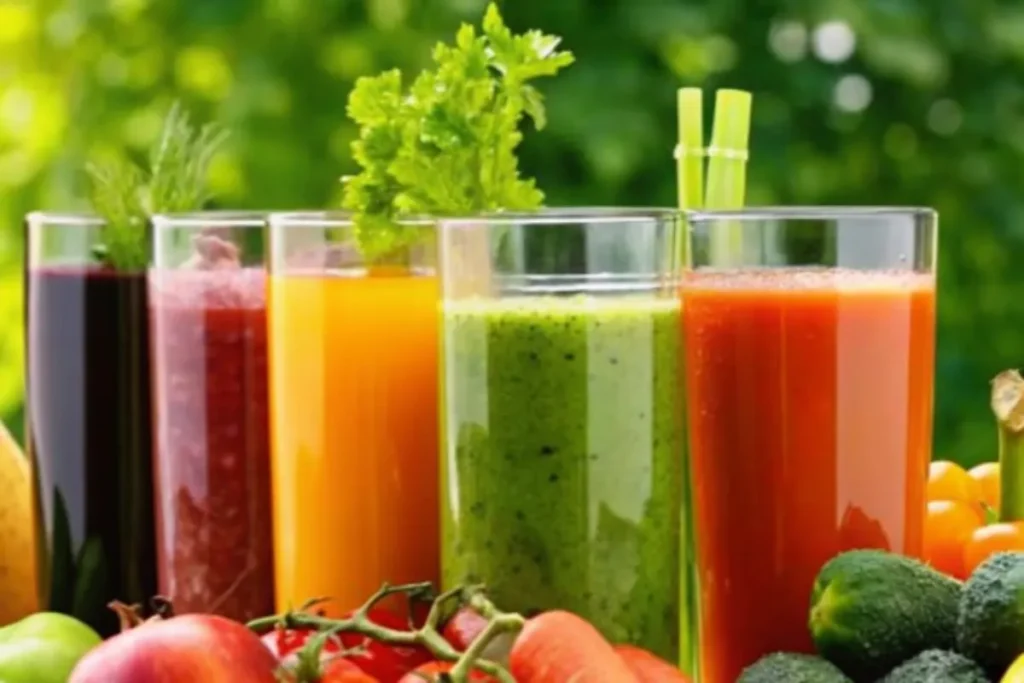Alright, let’s have a real chat about the smoothie diet. Picture this: you’re sipping a creamy, delicious blend of berries, spinach, and almond butter, feeling like a health guru without spending hours in the kitchen. Sounds dreamy, right? That’s the vibe of the smoothie diet, and it’s got people buzzing for good reason. But is it all it’s cracked up to be? Let’s break it down like we’re catching up over coffee, with a sprinkle of sarcasm and a whole lot of practical tips.
What Exactly is the Smoothie Diet?
So, what’s the deal? The smoothie diet is pretty straightforward: you replace one or more of your daily meals with smoothies. Some folks go hardcore and swap out two or three meals, while others ease in with just one. The most well-known version is the 21-Day Smoothie Diet by health coach Drew Sgoutas, where you blend up two meals a day and enjoy a sensible dinner.
The goal? Slash calories while flooding your body with nutrients from fruits, veggies, and other wholesome ingredients. It’s like giving your body a nutrient-packed hug in a glass. Plus, it’s crazy convenient—perfect for those mornings when you’re running out the door. But here’s the catch: a smoothie made with just fruit juice and a banana is dessert in disguise. We’ll talk about how to avoid that trap later.
Why Everyone’s Obsessed: The Benefits
Okay, let’s get to the good stuff. Why should you even consider this? Here’s why the smoothie diet has a fan club:
- Weight Loss: This is the big one. By swapping high-calorie meals for lower-calorie smoothies, you can create a calorie deficit, which is key for shedding pounds. A study in the Journal of Human Nutrition and Dietetics found that people who used meal replacement smoothies for breakfast lost more weight over 12 weeks than those eating a standard breakfast (Healthline). Pretty cool, right?
- Nutrient Boost: Most of us don’t eat enough fruits and veggies. Smoothies make it easy to pack in a rainbow of produce—think spinach, kale, berries, and avocados. As dietitian Jordan Spivak from Johns Hopkins Medicine says, “Smoothies are a great way to get protein, fiber, and other nutrients” (Johns Hopkins Medicine).
- Convenience: Life’s hectic, and cooking can feel like a part-time job. Smoothies take minutes to make, and you can prep them ahead. No dishes, no stress. FYI, this is a lifesaver for busy days.
- Customization: Vegan? Low-carb? High-protein? Smoothies bend to your needs. Add chia seeds for fiber, protein powder for muscle support, or avocado for healthy fats. It’s like a choose-your-own-adventure for your blender.
- Digestion and Hydration: The fiber in fruits and veggies keeps things moving (you know what I mean), and the liquid base helps you stay hydrated. Many folks report less bloating and better gut health.
- Energy and Skin Glow: Nutrient-dense smoothies can give you a natural energy boost without the coffee crash. Plus, antioxidants from berries and vitamins from greens can make your skin pop. Who needs fancy serums?
I’ll be honest—when I first tried smoothies as a meal replacement, I was skeptical. But after a week of blending greens and berries, I felt lighter, more energized, and my skin was giving “I woke up like this” vibes. Convinced yet?
How to Blend a Smoothie That’s Healthy
Not all smoothies are created equal. A sugar-laden fruit bomb won’t do you any favors. Here’s how to make a smoothie that’s as good for you as it tastes:
- Protein: Keeps you full and supports muscles. Try Greek yogurt (packed with probiotics), protein powder (whey or plant-based), nut butters, or silken tofu for a vegan option.
- Fruits and Veggies: Mix it up for maximum nutrients. Berries are low-sugar and antioxidant-rich, leafy greens like spinach or kale add vitamins, and bananas bring creaminess (but don’t overdo them).
- Liquids: Water’s fine, but unsweetened almond milk, coconut water, or green tea add flavor and benefits.
- Healthy Fats: These make your smoothie satisfying. Think avocado, chia seeds, flaxseeds, or a splash of coconut oil.
- Superfoods: Feeling extra? Toss in spirulina, matcha, or turmeric for a nutrient kick.
Pro tip: balance your flavors. A squeeze of lemon or a drizzle of honey can make your smoothie sing without overloading on sugar. For more smoothie ideas, check out our healthy breakfast smoothies on Erika Recipes.
Table: Building the Perfect Smoothie
| Component | Examples | Why It’s Awesome |
|---|---|---|
| Protein | Greek yogurt, protein powder, nut butter | Keeps you full, supports muscles |
| Fruits | Berries, bananas, mango | Adds sweetness, vitamins, antioxidants |
| Veggies | Spinach, kale, zucchini | Boosts nutrients without strong flavor |
| Liquids | Almond milk, coconut water, water | Hydrates, adjusts consistency |
| Healthy Fats | Avocado, chia seeds, flaxseeds | Adds richness, promotes satiety |
| Superfoods | Spirulina, matcha, turmeric | Extra nutrients for a health boost |
The Not-So-Smooth Side: Potential Downsides
Let’s keep it real—no diet is perfect, and the smoothie diet has its haters. Here’s what to watch out for and how to dodge the pitfalls:
- Sugar Spikes: Blending fruits releases natural sugars, which can mess with your blood sugar. The British Heart Foundation notes that smoothies count as only one of your five-a-day due to these “free sugars” (BHF). Fix it by using low-sugar fruits like berries and adding cinnamon to stabilize blood sugar.
- Calorie Creep: Smoothies can pack a caloric punch if you go heavy on nut butter or protein powders. Mayo Clinic’s Lorraine Fye warns that some smoothies add “unforeseen calories” (Mayo Clinic). Keep portions in check.
- Less Satisfying: Drinking meals skip the chewing process, which can leave you hungry. Add fiber-rich ingredients like oats or frozen fruit to make smoothies more filling.
- Nutrient Gaps: A smoothie-heavy diet might miss some nutrients if you’re not careful. Verywell Fit points out that a diet of mostly smoothies “may not work for everyone” long-term (Verywell Fit). Mix up your ingredients and consult a dietitian if needed.
- Social Vibes: Sipping a smoothie while your friends dig into pizza might feel a bit lonely. That’s why many people use this as a short-term strategy.
Sample Smoothie Recipes to Get You Started
Ready to blend? Here are two recipes that are as tasty as they are healthy:
Green Goddess Smoothie
- 1 banana
- 1 cup spinach
- 1/2 avocado
- 1 cup almond milk
- 1 tbsp chia seeds
- Squeeze of lemon
Blend until smooth. This creamy dream is packed with healthy fats and fiber. Perfect for breakfast or a post-workout refuel.

Berry Blast Smoothie
- 1 cup mixed berries (fresh or frozen)
- 1/2 cup Greek yogurt
- 1/2 cup orange juice
- 1 tbsp honey (optional)
Blend and sip! It’s sweet, tangy, and great for a quick snack. Want more? Explore our detox smoothie recipes on Erika Recipes.

Is the Smoothie Diet Sustainable?
Here’s the big question: can you live on smoothies forever? Probably not, unless you’re secretly a blender in disguise. 😜 Replacing all meals with smoothies might get boring, and you could miss the joy of chewing real food. Plus, eating is a social thing—good luck bonding over a straw at a barbecue.
That said, smoothies can be part of a long-term healthy diet. Having one for breakfast or a snack is a fantastic way to boost nutrients without going full liquid. Athletic Insight suggests using the smoothie diet for “short-term weight loss” due to its calorie reduction (Athletic Insight). For the long haul, balance smoothies with whole foods.
Real People, Real Results
To make this relatable, let’s hear from some folks who’ve tried it. Sarah, a 30-year-old teacher, lost 10 pounds in three weeks on the 21-Day Smoothie Diet. “I felt lighter and my skin glowed,” she says. Then there’s Mike, who hated veggies but loved smoothies. “I get all my greens in one glass now, and I enjoy it,” he laughs. These stories show the smoothie diet can work for different goals, from weight loss to better nutrition.

Conclusion: Blend It, Don’t Overthink It
So, there you have it—the smoothie diet in all its glory. It’s a fun, flexible way to improve your health, lose weight, and enjoy some seriously tasty drinks. But it’s not a one-size-fits-all fix. Focus on balanced ingredients, watch your sugar, and listen to your body. Start small—maybe one smoothie a day—and see how it feels. Experiment, have fun, and don’t be afraid to tweak it to fit your life.
FAQ: Your Smoothie Diet Questions Answered
1. Can I lose weight with the smoothie diet?
Yes, many people lose weight by reducing calories with smoothies. Just ensure they’re balanced to avoid hunger or nutrient gaps.
2. Is the smoothie diet healthy?
It can be if you include a variety of nutrients. Long-term, it’s best as part of a balanced diet, not a full replacement.
3. How many smoothies should I drink a day?
Depends on your goals. One or two meal replacements are common. Listen to your body and adjust as needed.
4. Are there risks to the smoothie diet?
Possible risks include sugar spikes, high calories, or nutrient deficiencies if not planned well. Consult a healthcare provider before starting.
5. Can I use frozen fruits in my smoothies?
Totally! Frozen fruits are budget-friendly and make smoothies thicker. Just check for no added sugars.
6. What’s the best blender for smoothies?
High-speed blenders like Vitamix are top-notch, but a NutriBullet works great on a budget. Pick what fits your needs.
